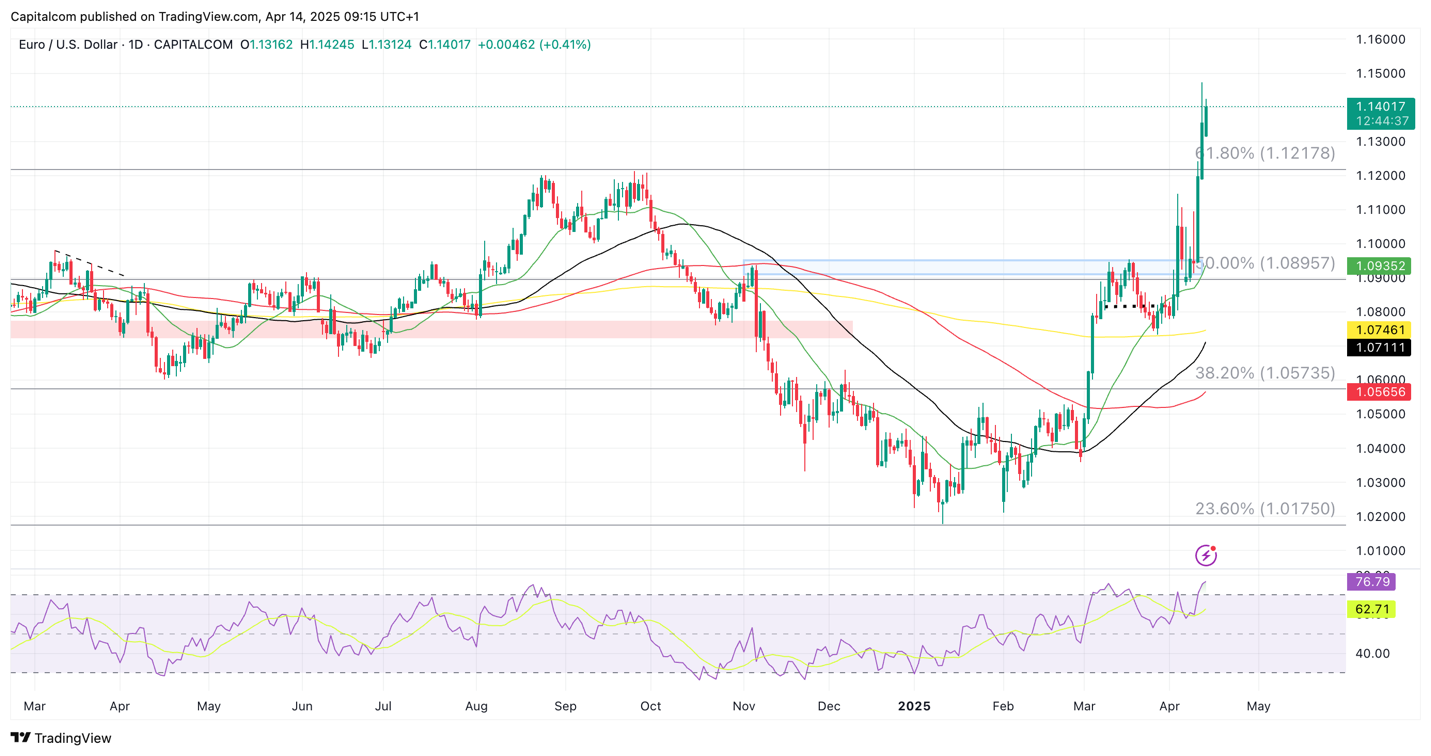ECB Preview: tariffs likely to force a rate cut
Markets expect the ECB to cut rates by 25bps as tariffs weigh on the growth outlook
The euro continues to exhibit strength this week, with EUR/USD climbing above 1.14, after some retracement toward the end of last week. It also remains robust against the pound, with EUR/GBP reaching a 15-month high above 0.8670. However, the daily EUR/USD chart is starting to show signs of rally exhaustion, indicated by a flattening RSI and lower highs.
EUR/USD daily chart

Past performance is not a reliable indicator of future results.
The recent weakness in the dollar has driven investors toward other currencies, with the euro being a prominent beneficiary alongside the Japanese yen. A major factor in this trend has been the European Central Bank (ECB), which has played a pivotal role in easing monetary policy over the last nine months, slashing rates by 200 basis points from 4.5% to the current 2.5%. In comparison, both the Federal Reserve and the Bank of England have lowered rates by 100bps and 75bps, respectively.
Rather than waiting for worsening data to justify a rate cut, the ECB has adopted a proactive stance, moving ahead of the curve from the outset. This approach has boosted market confidence, particularly as global growth is expected to slow due to President Trump’s tariff policies. While maintaining a delicate balance between growth and inflation remains crucial, the Eurozone’s lower rates provide the ECB with a stronger foundation for focusing on price stability and growth, even if tariffs temporarily drive-up inflation.
Diverging views on the timing of rate cuts
Market expectations suggest that the ECB is likely to continue its rate-cutting cycle. Current pricing shows a 99% probability of a 25-basis-point rate cut at this week's meeting on Thursday. The rationale behind this expectation is that, although recent CPI data indicates a slow disinflation process, the ECB is likely to prioritize stimulating growth. Under normal circumstances, the bank might have held rates steady this month and resumed cuts at a later stage.
However, minutes from the ECB's March meeting revealed diverging views on the timing of further rate cuts. The more dovish members emphasized concerns about inflation potentially underperforming due to rising trade tensions and a stronger euro. In contrast, hawkish members pointed to persistent inflation in the services sector and the policy shift in Germany, advocating for a more cautious approach to rate cuts. Consequently, only a few members were willing to back another 25-basis-point reduction, provided that the ECB’s communication was adjusted to avoid signalling any future cuts or a clear policy direction.
The recent tariff announcements appear to have strengthened the case for a rate cut, leading markets to expect further easing. The key question is whether these developments will sway the more hawkish members of the ECB. The answer seems likely to be yes. If anything, this rate cut would serve as a necessary safeguard, reassuring markets of the ECB’s commitment to supporting growth. President Lagarde will likely need to adjust her rhetoric to acknowledge that rates are nearing a neutral level.
Looking ahead, there is a risk that the ECB might be forced to cut rates more aggressively than originally intended. The strengthening euro is exerting additional disinflationary pressure on the Eurozone economy, making imports cheaper and lowering overall costs.